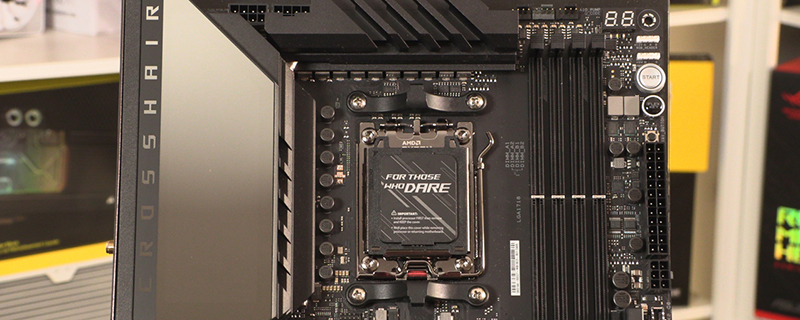ASUS ROG Crosshair X670E Hero Review
Conclusion
One area AMD have always managed to get right, even in their darkest hours, is their commitment to a particular socket. AM3 was around for years, and whilst AM4 wasn’t around for quite as long as that venerable socket, it was largely killed off because of the rapid evolution of the technologies around which it was based. If you think how long DDR3 was around, the lifespan of DDR4 seemed relatively brief. PCI Express 4.0 was like a Mayfly compared to PCIe 3.0, and yet we’re already at PCIe 5.0 on the major models. Naturally if you want to employ all the high end technologies you need to revise your platform, which is why AM5 is here. Thankfully though all of those aforementioned technologies are relatively new and thus should be with us, maturing, for a while. With AMDs track record for sticking with a socket, and the newness of the “5” technologies then any purchase today should be about as futureproof as you can reasonably get.
That futureproof idea is one upon which the reputation of the ASUS Republic of Gamers brand has been built. They’ve always stuffed everything they could on to their high end models, and the AMD version of their premium brand is the Crosshair. The X570 Crosshair Hero and subsequent Dark Hero sold in huge quantities, and we see no reason why the X670E won’t do likewise. It’s like a “what’s what” of current hardware thinking.
We’ll start with M.2 storage. Not content with just giving you a single PCIe 5.0 slot, the Hero has two Gen5 slots and two Gen4 slots. If those aren’t enough you also get, in the box, a PCI Express card that gives you another Gen5 M.2 for three in total. The main slots into which we place our graphics cards has seen a similar level of attention to detail. All the X670E motherboards we’ve reviewed so far have one PCIe 5.0 slot – if they have any – whilst the Crosshair Hero has two. It isn’t only the slot based stuff that has got all the latest tech though. On the backplate there are a host of USB 3.2 ports, including the 20 Gbps 2×2 type, but ASUS have also included two USB 4 Type-C ports for the ultimate in futureproofing. The handful of these we’ve seen so far are usually internal, but the Crosshair Hero places them at the back. Lastly the Hero has a very serious power phase design consisting of 18+2 110A power stages found beneath that serious cooler and the full size Hero RGB display.
Performance across the AM5 range is extremely close, but as you can see from all the above the Crosshair Hero is offering far more than merely a place to install your new 7000 series Ryzen processor. It’s a glimpse into what is possible from today’s technologies, the ultimate expression of the art form. At least until we get our hands on the Crosshair Extreme. The ASUS ROG Crosshair X670E Hero is a premium product with a premium price, but if you must have the best and nothing less will do, it’s enticing and wins our OC3D Enthusiast Award.
MSRP £679.99
Discuss the ASUS ROG Crosshair X670E Hero in our OC3D Forums.




